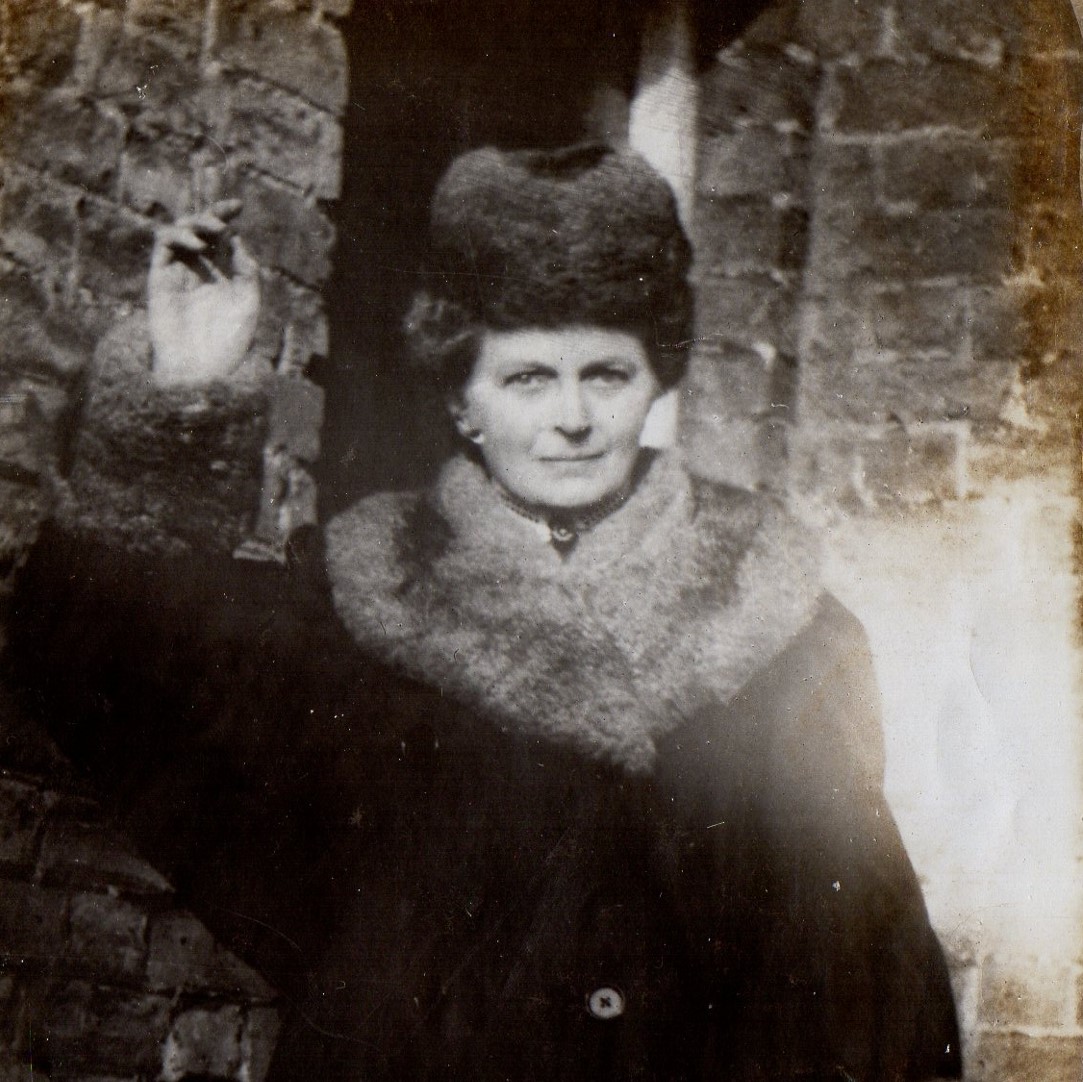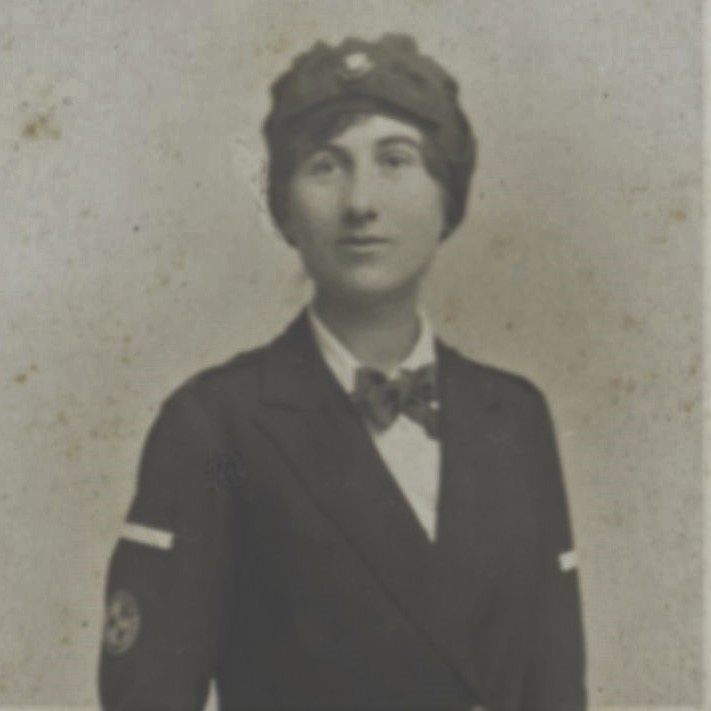Betty Foggy
‘….She was born on a chill day when fog shrouded field and meadow. So her mother called her Foggy- Betty Foggy’.
This description from a Pembrokeshire Life article by Vernon Scott speaks volumes about the intrigue surrounding Betty and Victorian attitudes towards her lifestyle and perceived eccentricities. In the 1850s, a time of suspicion and superstition, she was thought of as a mysterious figure to be approached with caution; parents warned their children, “Don’t go near that woman, or her home she’s a witch!”
Betty Foggy was thought to have been born in 1805 and ‘according to the story passed down over the years she was the product of a liaison between a beautiful long-haired Romany girl and a gentleman of substance’. Legend describedher as ‘wrong in the head’ and ‘much desired by men’; she was also an unmarried mother. Betty’s unconventional background and living arrangements (she lived in a dilapidated cottage on a plot of high ground at Pembroke) made her a subject of judgment and ridicule.
In the summer of 1853, Pembroke Dockyard’s latest ship, (the 90-gun Caesar), stood on the stocks, ready for launch on July 21st. Such days were memorable occasions where the dignitaries and residents of Pembroke and Pembroke Dock flocked to the Royal Dockyard to witness history in the making. In July 1853 however, Betty Foggy was denied access to the launch of the Caesar by officials and jeered at and jostled by members of the public:
‘There’ll be no launch today for the ship won’t go off’ she cursed loudly before leaving. ‘She was seen hurrying up the steep, grassy hill on the southern side of the Dockyard, all the time muttering to herself’.
The ceremony continued but the two-decker warship that should have slipped easily into the Haven waters, remained fast. An inquiry was instigated and it was discovered that the Dockyard had used fir wood for the launching ways, instead of oak. The timber proved too soft, preventing a successful ‘glide off’ of the ship. Also, the tallow used to grease the launching way was of inferior quality.
On the morning of August 7th ( 17 days after Caesar should have been launched ), – the ship began to slide away and as the tide rose that evening, the long delayed launch was completed.
Betty Foggy is believed to have died in poverty, ‘crippled and alone’, in the 1880s.For many years a white cross adorned a rock at Trewent Point, Freshwater East, near Pembroke. It was said to mark a site known as Betty Foggy’s Well.
‘….She was born on a chill day when fog shrouded field and meadow. So her mother called her Foggy – Betty Foggy’.
Daw’r dyfyniad uchod o erthygl yn Pembrokeshire Life gan Vernon Scott ac mae’n dweud cyfrolau am y chwilfrydedd ynghylch Betty ac agweddau tuag at ei ffordd o fyw a’r hyn a welwyd fel ecsentrigrwydd yn Oes Fictoria. Yn y 1850au, adeg o amheuaeth ac ofergoeliaeth, gwelwyd Betty fel ffigur hynod y dylid bod yn ofalus ohoni; rhybuddiai rieni eu plant, “Peidiwch â mynd yn agos at y fenyw ‘na, na’i chartref, gwrach yw hi!”
Credwyd i Betty Foggy gael ei geni yn 1805 ac ‘yn ôl yr hanes a drosglwyddwyd dros y blynyddoedd roedd yn ffrwyth cyfarfod rhwng merch Romani hardd â gwallt hir, a gŵr bonheddig cefnog’. Yn ôl y straeon roedd â ‘nam yn ei phen’ ac ‘yn destun chwant i ddynion’; roedd hefyd yn ddibriod. Oherwydd cefndir anghonfensiynol Betty a’i threfniadau byw (roedd yn byw mewn bwthyn wedi mynd â’i ben iddo, ar ddarn o dir uchel ym Mhenfro) roedd yn destun barn a gwawd.
Yn haf 1853, safai cwch diweddaraf Iard Longau Penfro, (y Caesar â’i 90 gwn ), ar y blociau, yn barod i’w lansio ar 21 Gorffennaf . Roedd diwrnodau o’r fath yn achlysuron cofiadwy a deuai gwŷr bonheddig a thrigolion Penfro a Doc Penfro i’r Iard Longau Frenhinol i weld hanes yn cael ei greu. Ym mis Gorffennaf 1853 fodd bynnag, gwrthododd swyddogion adael i Betty Foggy ddod i weld lansio’r Caesar a bu aelodau o’r cyhoedd yn ei gwawdio a’i gwthio:
‘Chewch chi ddim lansio heddi’, cans ni fydd y cwch yn symud’ melltithiodd ar dop ei llais cyn gadael. ‘Gwelwyd hi’n carlamu i fyny’r bryn serth, glaswelltog ar ochr ddeheuol yr Iard Longau, gan siarad o dan ei hanadl’.
Parhaodd y seremoni ond ni symudodd y llong rhyfel deulawr a ddylai fod wedi llithro’n hwylus i ddyfroedd yr Aber. Cafwyd ymchwiliad a darganfuwyd bod yr Iard Longau wedi defnyddio coed pinwydd ar gyfer y cledrau lansio, yn lle coed derw. Roedd y pren yn rhy feddal, ac felly ni allai’r llong lithro’n hwylus. Roedd y gwêr a ddefnyddiwyd i iro’r cledrau lansio hefyd o ansawdd is.
Ar fore 7 Awst ( 17 niwrnod ar ôl dyddiad lansio’r Caesar), dechreuodd y llong lithro i ffwrdd ac wrth i’r llanw godi y noson honno, cwblhawyd y lansio a oedd wedi oedi cyhyd.
Credir i Betty Foggy farw mewn tlodi, ‘yn gloff ac yn unig’, yn y 1880au. Am flynyddoedd lawer, roedd croes wen ar graig yn Nhrwyn Trewent, Freshwater East, ger Penfro. Dywedwyd ei bod yn nodi safle a adwaenwyd fel Ffynnon Betty Foggy.
*With thanks to Pembroke Dock Heritage Centre





